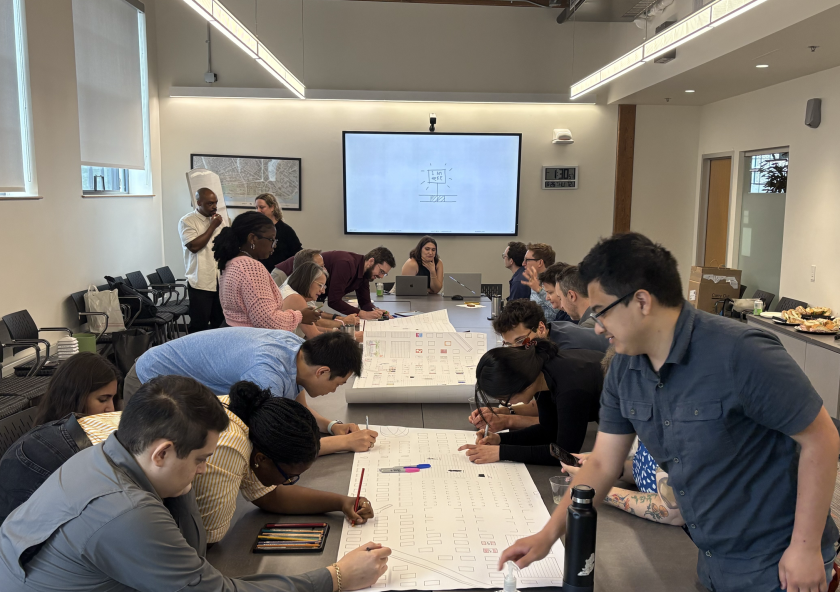
Tackling Sustainability Challenges with the MIT Campus Climate Action Summer Cohort

This summer, nine MIT students joined the Campus Climate Action Cohort, a 10-week program led by the MIT Office of Sustainability (MITOS) and the Climate Project. Now in its second year, the program brings undergraduate and graduate students together to work full-time on applied sustainability efforts that use MIT’s campus as a test bed for climate innovation. Their charge: take on pressing climate challenges while connecting their work to the wider Cambridge and Boston communities.
A Cohort Tackling Complex Systems
The 2025 student cohort focused on three interconnected areas: decarbonization, climate resilience, and sustainable food systems. While each project had its own scope, the work was intentionally overlapping and interdisciplinary, rooted in shared data and collective learning.
Students advancing MIT’s decarbonization goals analyzed campus thermal energy use and evaluated emerging technologies such as electric boilers and industrial-scale heat pumps. Using MIT’s energy data platform (Energize_MIT), they explored electrification pathways, timing, tradeoffs, and alignment with regional energy strategies.
Others focused on climate resilience, using data and mapping tools to assess heat and flood risk across campus buildings and landscapes. The students expanded MIT’s database of observed flood events and stormwater infrastructure, and built upon work from prior years to track urban heat exposure using temperature sensors in collaboration with the City of Cambridge. The students deployed sensors to monitor temperature and humidity to identify heat exposure patterns and test strategies for staying cool as summers get hotter.
Meanwhile, the food systems team prototyped a decentralized network of growing spaces on campus and researched food-waste-to-energy options like anaerobic digestion. Together, the three project areas highlighted how systems of energy, food, water, and land can be transformed in the face of a changing climate using MIT as a test bed to inform their work.
Collaboration and Community at the Core
The program also emphasized professional growth, reflection, and community connection. Staff across MIT helped students strengthen communication and career skills, explore MIT’s library and data resources, and see firsthand how energy systems operate on campus. Contributors included Vippy Yee and Caitie Whelan (PKG Center), Tianna Ransom (Career Advising and Professional Development), Alejandro Paz and Erin Shives (Libraries), Chris Featherman (Writing and Communication Center), and Jon Sepich (Central Utilities Plant).
Students got their hands dirty by volunteering in the garden with City Sprouts, and witnessed climate innovation in action through a series of inspiring field trips including visits to Eastie Farm, Yale’s geothermal project, Boston Medical Center Rooftop Farm, and Wellesley College greenhouses.
Real-World Impact
With climate challenges accelerating, exposure to that kind of applied, systems-based work is essential for cultivating the next generation of problem-solvers. In addition to research, the summer’s work demonstrates how students can help move MIT’s climate commitments forward while building the skills, context, and connections to shape climate solution development.

